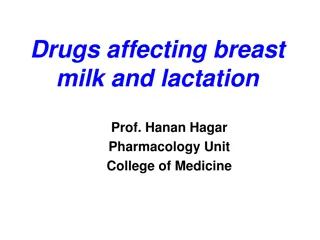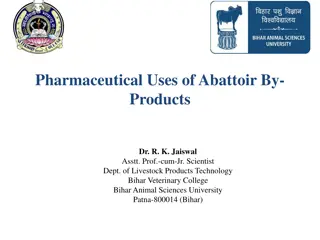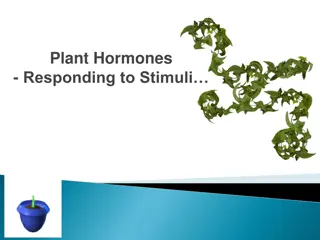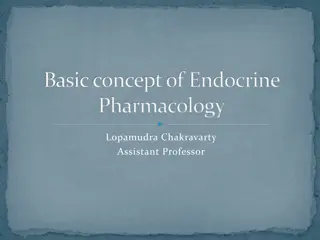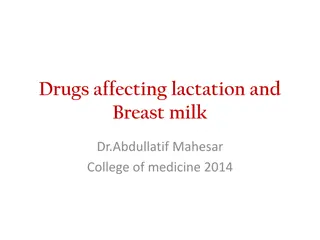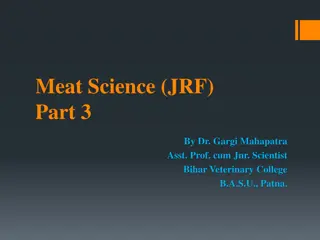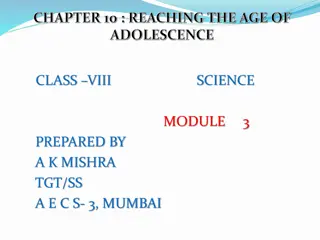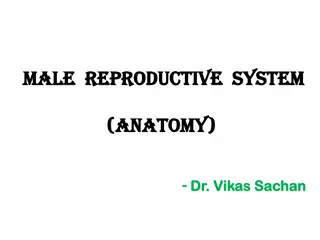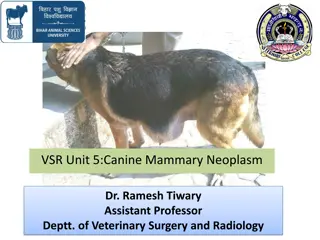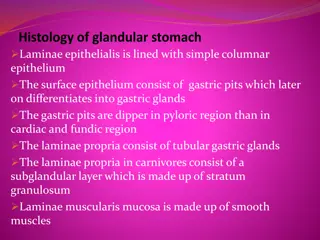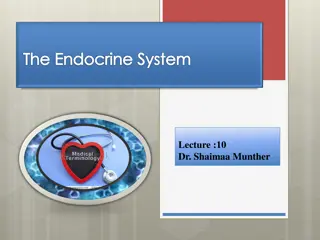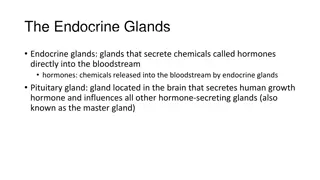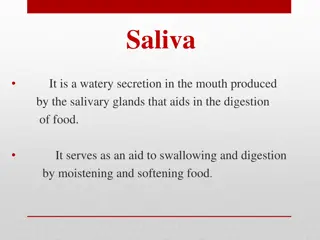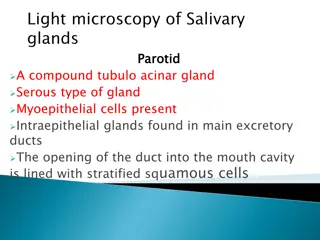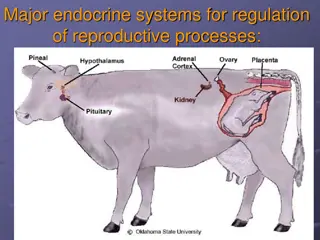Stages of Lactation: Understanding Mammary Glands and Hormones
Lactation, the yielding of milk by mammary glands, involves stages like Mammogenesis, Lactogenesis, Galactopoiesis, and Involution. Hormones like Prolactin, Estrogens, Oxytocin, and Progesterone play crucial roles in milk production. Understanding the process is vital for breastfeeding mothers.
Download Presentation

Please find below an Image/Link to download the presentation.
The content on the website is provided AS IS for your information and personal use only. It may not be sold, licensed, or shared on other websites without obtaining consent from the author.If you encounter any issues during the download, it is possible that the publisher has removed the file from their server.
You are allowed to download the files provided on this website for personal or commercial use, subject to the condition that they are used lawfully. All files are the property of their respective owners.
The content on the website is provided AS IS for your information and personal use only. It may not be sold, licensed, or shared on other websites without obtaining consent from the author.
E N D
Presentation Transcript
DEFINITION: Lactation is the medical term for yielding of milk by the mammary Lactation is the medical term for yielding of milk by the mammary glands which leads to breastfeeding. Human milk contains the glands which leads to breastfeeding. Human milk contains the ideal amount of nutrients for the infant, and provides important ideal amount of nutrients for the infant, and provides important protection from diseases through the mother's natural defenses. protection from diseases through the mother's natural defenses.
THERE ARE FOUR STAGES OF LACTATION: Mammogenesis Mammogenesis (growth of the breasts) (growth of the breasts) Lactogenesis Lactogenesis (the functional change of the breasts so that they can (the functional change of the breasts so that they can secrete milk) secrete milk) Galactopoiesis Galactopoiesis (maintaining the production of milk) (maintaining the production of milk) Involution (the termination of milk production). Involution (the termination of milk production).
HORMONES INVOLVED IN LACTATION ARE: Prolactin Prolactin- - Prolactin makes the cells differentiate to perform their own specific role. Prolactin makes the cells differentiate to perform their own specific role. After birth, the alveoli produce milk because of prolactin (this hormone is sent via the After birth, the alveoli produce milk because of prolactin (this hormone is sent via the hypothalamus) Prolactin can only be produced after exposure to cortisol. hypothalamus) Prolactin can only be produced after exposure to cortisol. Estrogens Estrogens- - During During pregnancy the levels of Estrogen are higher, these levels cause the pregnancy the levels of Estrogen are higher, these levels cause the growth of the breast tissue. growth of the breast tissue. Oxytocin Oxytocin- - is released when the nipples are stimulated, it causes the alveoli to contract, is released when the nipples are stimulated, it causes the alveoli to contract, which squeezes the milk out into the duct system. This is called a let down. A let down which squeezes the milk out into the duct system. This is called a let down. A let down happens a few times while breastfeeding. happens a few times while breastfeeding. Progesterone Progesterone- - causes the breast tissue to multiply, but inhibits milk production. After causes the breast tissue to multiply, but inhibits milk production. After birth, progesterone levels drop, this triggers milk production. birth, progesterone levels drop, this triggers milk production. adrenal corticoids (cortisol) adrenal corticoids (cortisol)- - an adrenal hormone produced in response to stress. an adrenal hormone produced in response to stress. Insulin Insulin- - the the level of glucose (a type of sugar) in the blood. level of glucose (a type of sugar) in the blood. G Growth hormone rowth hormone
PROCESS: 1. 1. Early in a woman's pregnancy her milk Early in a woman's pregnancy her milk- -producing glands begin to prepare for her baby's arrival, producing glands begin to prepare for her baby's arrival, and by the sixth month of pregnancy the breasts are ready to produce milk and by the sixth month of pregnancy the breasts are ready to produce milk. . 2. 2. Immediately after the baby is born, the placenta is Immediately after the baby is born, the placenta is delivered causing the hormone woman's body (prolactin) to activate the milk woman's body (prolactin) to activate the milk- -producing woman's breasts fill with milk woman's breasts fill with milk. . delivered causing the hormone in the producing glands and by glands and by the third to fifth day, the in the the third to fifth day, the 3. 3. The baby's sucking stimulates nerve endings in the nipple, which signal the mother's pituitary The baby's sucking stimulates nerve endings in the nipple, which signal the mother's pituitary gland to release oxytocin, a hormone that causes the mammary glands to release milk to the gland to release oxytocin, a hormone that causes the mammary glands to release milk to the nursing nursing baby baby, called the "let , called the "let- -down reflex." down reflex." 4. 4. While the baby's sucking is the primary stimulus for this reflex, a baby's cry, thoughts of the While the baby's sucking is the primary stimulus for this reflex, a baby's cry, thoughts of the baby, or the sound of running water also may trigger the response. Frequent nursing will lead baby, or the sound of running water also may trigger the response. Frequent nursing will lead to increased milk production. to increased milk production.
MAMMOGENESIS MAMMOGENESIS: : The The inactive breast is mainly made up of adipose tissue; however the lactating inactive breast is mainly made up of adipose tissue; however the lactating breast has a greater proportion of glandular tissue breast has a greater proportion of glandular tissue. . During pregnancy the breasts During pregnancy the breasts enlarge; becomes thinner and the veins in the breast become more prominent becomes thinner and the veins in the breast become more prominent. . enlarge; the nipple pigment darkens; the skin the nipple pigment darkens; the skin In In mammogenesis mammogenesis the ductal system grows and branches; the amount of the ductal system grows and branches; the amount of connective tissue and supporting cells increases and fat is laid down in the breast. connective tissue and supporting cells increases and fat is laid down in the breast. This is stimulated by the This is stimulated by the estrogens estrogens, growth hormone, prolactin, insulin and the , growth hormone, prolactin, insulin and the adrenal corticoids adrenal corticoids. . Progesterone is involved in the last stages of Progesterone is involved in the last stages of mammogenesis system has grown. It acts with the other hormones to develop the breast lobules system has grown. It acts with the other hormones to develop the breast lobules and alveoli, and adapts the alveoli to have secretory properties. and alveoli, and adapts the alveoli to have secretory properties. mammogenesis after the ductal after the ductal
LACTOGENESIS LACTOGENESIS: : Lactogenesis Lactogenesis I:the ability of the mammary glands to secrete milk from mid I:the ability of the mammary glands to secrete milk from mid- - pregnancy to late pregnancy to late pregnancy. It starts pregnancy. It starts from mid involves the differentiation of alveolar epithelial cells and the stimulation of milk involves the differentiation of alveolar epithelial cells and the stimulation of milk synthesis by prolactin synthesis by prolactin. . from mid- -pregnancy till 2 days after birth. It pregnancy till 2 days after birth. It Lactogenesis Lactogenesis II: from day 3 postpartum to day 8. It is triggered by the reduction of progesterone. from day 3 postpartum to day 8. It is triggered by the reduction of progesterone. The breast become full and warm and produce large amounts of milk. The breast become full and warm and produce large amounts of milk. II: the formation of large amounts of milk after the formation of large amounts of milk after parturition. It starts parturition. It starts
GALACTOPOIESIS GALACTOPOIESIS: : Galactopoiesis Galactopoiesis starts around 9 days after birth and finishes at the beginning of starts around 9 days after birth and finishes at the beginning of involution. It is the maintenance of milk secretion controlled by hormones. Breast involution. It is the maintenance of milk secretion controlled by hormones. Breast size starts to size starts to diminish between diminish between 6 to 9 months after birth. The rate of milk 6 to 9 months after birth. The rate of milk formation normally decreases after 7 formation normally decreases after 7- -9 months; however milk production can 9 months; however milk production can continue for years if the child continues to suckle. continue for years if the child continues to suckle. Involution: Involution: is the loss of secretory function of milk, due to the accumulation of is the loss of secretory function of milk, due to the accumulation of inhibiting peptides. It normally starts 40 days after the last breastfeed. inhibiting peptides. It normally starts 40 days after the last breastfeed. The epithelial cells no longer require their secretory properties so they are The epithelial cells no longer require their secretory properties so they are removed by the process of apoptosis and replaced by adipocytes. removed by the process of apoptosis and replaced by adipocytes.
NURSING NURSING PROBLEMS: PROBLEMS: New mothers may experience nursing problems, including New mothers may experience nursing problems, including: : Engorged breasts. Breasts that are too full can prevent the baby from sucking. Engorged breasts. Breasts that are too full can prevent the baby from sucking. Expressing milk manually or with a breast pump can help. Expressing milk manually or with a breast pump can help. Sore nipples. In the early weeks nipples may become sore; a nipple shield can Sore nipples. In the early weeks nipples may become sore; a nipple shield can ease discomfort. ease discomfort. Infection. Soreness and inflammation on the breast surface or a fever in the Infection. Soreness and inflammation on the breast surface or a fever in the mother, may be an indication of breast infection. Antibiotics and continued mother, may be an indication of breast infection. Antibiotics and continued nursing on the affected side may solve the problem. nursing on the affected side may solve the problem.
PROGNOSIS: PROGNOSIS: There are no rules about when to stop breastfeeding. A baby needs breast milk There are no rules about when to stop breastfeeding. A baby needs breast milk for at least the first year of life; as long as a baby eats age for at least the first year of life; as long as a baby eats age- -appropriate solid food, the mother may nurse for several years. the mother may nurse for several years. Composition of breast Composition of breast milk: appropriate solid food, milk: Composition: Composition: Water Fat Lactose Casein Lactalbumin and other milk proteins Ash (calcium and minerals) Percentage (%): Percentage (%): 88.5 3.3 6.8 0.9 0.4 0.2
Advantages: Advantages: Disadvantages: Disadvantages: Readily available Readily available Affordable Affordable The baby acquires natural passive immunity The baby acquires natural passive immunity because breast milk contains the mother's because breast milk contains the mother's antibodies and other anti antibodies and other anti- -infectious agents. Breastfeeding prevents Breastfeeding prevents menustration could be a method of natural birth control; could be a method of natural birth control; however it is not fail safe. however it is not fail safe. Helps the woman return to her pre Helps the woman return to her pre- -pregnancy weight, because lactation uses a lot of energy. weight, because lactation uses a lot of energy. It may reduce the risk of breast and ovarian It may reduce the risk of breast and ovarian cancer. cancer. It is thought to reduce rates of obesity, It is thought to reduce rates of obesity, therefore it reduces the risk of Type therefore it reduces the risk of Type- -2 2 diabetes, diabetes, hypercholesterolemia hypercholesterolemia and hypertension. hypertension. There is evidence that those who have been There is evidence that those who have been breastfeed achieve better in intelligence tests breastfeed achieve better in intelligence tests Risk Risk of transmission of diseases like HIV and Hepatitis C of transmission of diseases like HIV and Hepatitis C from baby to mother. from baby to mother. May not be economically viable because some women May not be economically viable because some women have to return to work, so they cannot breastfeed their have to return to work, so they cannot breastfeed their child exclusively. child exclusively. infectious agents. menustration, which , which Sometimes breastfeeding can become uncomfortable, Sometimes breastfeeding can become uncomfortable, with some mothers suffering from nipple pain. with some mothers suffering from nipple pain. pregnancy Breastfeeding in public is still taboo; so feeding "on Breastfeeding in public is still taboo; so feeding "on demand" may not be socially acceptable. demand" may not be socially acceptable. If a mother does not replenish the quantity of calcium If a mother does not replenish the quantity of calcium phosphate in the milk, the body responds by enlarging phosphate in the milk, the body responds by enlarging the parathyroid glands which causes her bones to the parathyroid glands which causes her bones to decalcify, making her more susceptible to fractures decalcify, making her more susceptible to fractures. . and
BIBLIOGRAPHY: http:// http://medical medical- -dictionary.thefreedictionary.com/Lactation dictionary.thefreedictionary.com/Lactation http:// http://www.fastbleep.com/biology www.fastbleep.com/biology- -notes/16/79/496 notes/16/79/496 https://s-media-cache-ak0.pinimg.com/236x/3d/84/e8/3d84e82e6a89c334aaaeee14e1d80e52.jpg http://austin.citymomsblog.com/wp-content/uploads/sites/25/2013/05/breastfeeding.jpg https://s-media-cache-ak0.pinimg.com/236x/6d/38/95/6d389507dd9e0a8ecddfbde37ff74202.jpg




